TrinaTracker has developed strict and comprehensive design and verification process procedures to ensure the reliability of tracker structure design and application, including module reliability test, tracker reliability, safety and performance test, and third-party certification.
The R&D center of TrinaTracker has carried out tests related to module reliability, including dynamic load test, ultimate load test and durability test regarding life, vibration, corrosion, etc.
In addition, TrinaTracker verified the reliability of tracking products through wind tunnel tests. Based on the principle of flow similarity, the wind tunnel test places the scaled model of the tracker in the wind tunnel of the atmospheric boundary layer, simulates the wind environment of the tracker by generating artificially controllable air flow, so as to study the static and dynamic wind loads and wind-induced responses acting on the structure, and then evaluate the wind resistance safety and reliability. Through the scaled model test, the wind load and wind-induced response characteristics are almost the same as those of the full-scale tracker.
Through the wind tunnel test of multi row array model, the influence of shielding effect on tracker array can be studied.
The wind tunnel test of TrinaTracker was carried out in two world leading wind engineering consulting companies, Rowan Williams Davies & Irwin (RWDI) and Cermak Peterka Petersen (CPP).
Founded in 1972, RWDI has offices all over the world, including Canada, the United States, the United Kingdom, India, China, Singapore and China’s Hong Kong.
RWDI has perfect wind engineering research capability and proprietary database, such as wind tunnel test, CFD simulation, rich meteorological database and tracker scale model manufacturing technology, and its wind tunnel test capability is at the world advanced level.
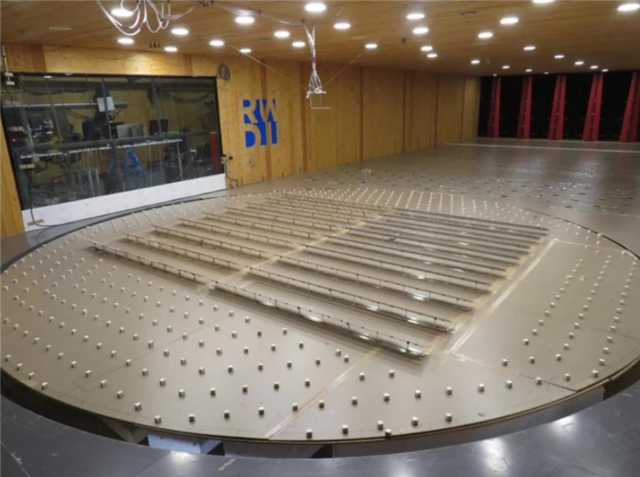
RWDI wind tunnel facilities
CPP, founded in 1981, is a world-famous wind engineering consulting company. CPP has wind tunnel laboratories in Colorado (USA) and Sydney (Australia) and offices in other major regions of the world. The company has participated in many first-class wind engineering practice cases in the photovoltaic field. It is the largest and most experienced wind engineering consulting company in the United States.
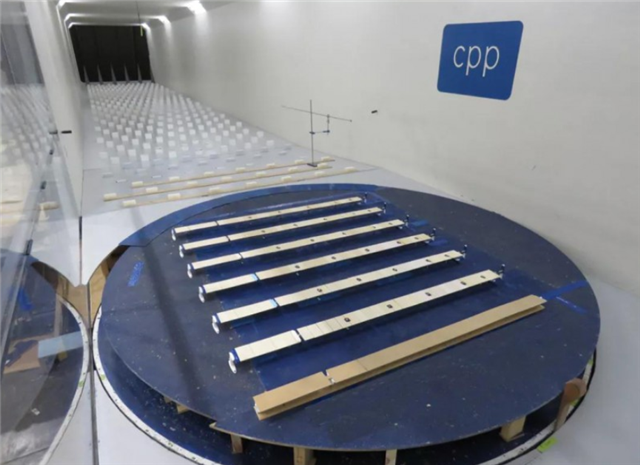
CPP wind tunnel facilities
The wind tunnel test of TrinaTracker includes pressure test, two-dimensional segment model test, numerical modeling analysis and full aeroelastic test. Static and dynamic load information can be obtained from pressure test, which can be used to calculate shape factor, moment factor and dynamic amplification factor (DAF).
In the pressure test, multi row rigid scale model and electronic pressure scanning valve are used to collect wind pressure information. The shape coefficient and moment coefficient are obtained from the dynamic wind pressure information collected in the pressure test through statistical analysis and calculation. The DAF is calculated by the natural frequency obtained from modal analysis, the damping ratio can obtained from free vibration test and dynamic wind load.
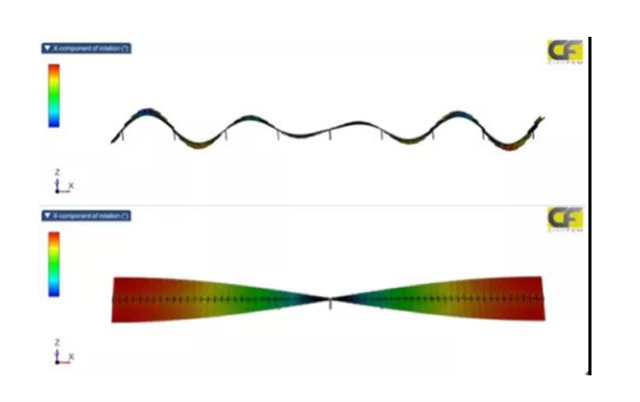
Modal analysis of tracker
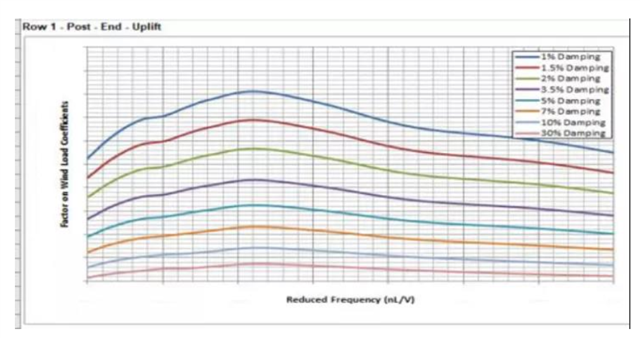
Dynamic amplification factor (DAF)
The static coefficient obtained from the pressure test can more accurately define the row spacing, the height above the ground, the column spacing and the length of the tracker.
The two-dimensional segmental model test adopts the segmental model with torsion spring suspension system. Through two-dimensional segment model test, TrinaTracker can obtain information such as torque and critical wind speed to determine the best protection position.
Combined with the two-dimensional segmental model test and the established numerical analysis model, the aerodynamic stability analysis and buffeting response analysis are carried out. The advantage of the data obtained from the two-dimensional segmental model test is that the results are suitable for trackers of various sizes. The aerodynamic derivative defines the self-excited force for flutter and buffeting analysis, and establishes a numerical model to calculate the torque and critical wind speed.
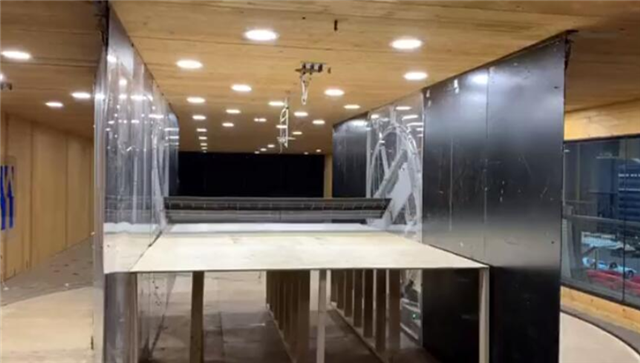
Two-dimensional segmental model test
The calculation results of the numerical model are verified by comparing the results of full aeroelastic wind tunnel test. The advantage of the numerical model is universality, which can be applied to a variety of tracker working conditions.
The full aeroelastic wind tunnel test adopts a multi row flexible model, which can measure the wind-induced response (buffeting, torsional divergence, vortex vibration, galloping and flutter) caused by the influence of the tracker itself or adjacent trackers. The test is only conducted under one working condition to verify the accuracy of the numerical model used in the two-dimensional segment test.
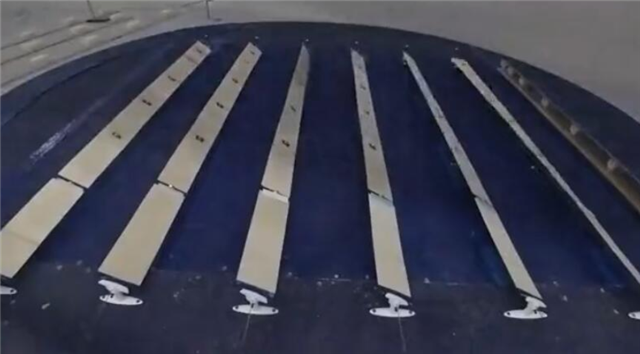
Full aeroelastic wind tunnel test
The wind tunnel test evaluates the impact of wind load on the main structural modules (columns, torque tubes and purlins) and connecting components (bearings and transmission devices) of the tracker, and provides corresponding data for optimizing the tracker design and improving the accuracy of adapting to the site.
In order to optimize and improve the structural design of the tracker, TrinaTracker has concentrated R&D and engineering resources to solve various hidden dangers that may occur during the adaptation of the tracker to large-size modules with ultra-high power (such as greater wind load on the modules, wind-induced instability, etc.).
TrinaTracker cooperates with these two leading wind engineering consulting companies comprehensively optimized the structural design of tracker, reduced the risk of wind-induced instability, and ensured the optimal power generation efficiency and system reliability.
You may also be interested in: Trina Solar: Why wind tunnel testing of tracker is crucial?



